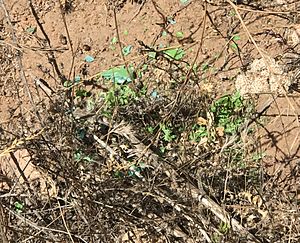Photodegradation facts for kids
Photodegradation is when materials change or break down because of light, especially sunlight. Think of it like a sunburn for objects! Often, this happens when sunlight and air work together, causing things to fade, crack, or become weaker.
Sometimes, people want to avoid photodegradation because it can ruin paintings, old photos, or other important items. But in other cases, it can be helpful. For example, it helps break down old plants and animals in nature, and it's used in some ways to clean water. Photodegradation mainly involves ultraviolet (UV) light, which is the same light that can give you a sunburn. It's not about damage from heat.
Contents
How Light Affects Things
Food and Drinks
Protecting food from light damage is very important. Some nutrients in food can be destroyed when exposed to sunlight.
For example, have you ever wondered why beer bottles are often brown? That's because UV light can make beer taste bad! It breaks down certain parts of the hops, changing the flavor. Brown (amber) glass helps stop this by blocking the UV rays, keeping your drink tasting good.
Paints, Inks, and Dyes
Paints, inks, and dyes that come from natural or organic sources are more likely to fade or change color in the sun. That's why things like ceramic tiles, which are often colored with materials that are not organic, can keep their bright colors even when left outside in strong sunlight.
Farm Chemicals
Scientists are very interested in how light breaks down chemicals used on farms, like pesticides and herbicides. These chemicals are designed to kill pests or weeds, so they need to last for a while. However, it's also good if they break down eventually so they don't stay in the environment forever.
Sometimes, special chemicals are added to make pesticides break down faster when exposed to light. This can help keep our environment cleaner.
Medicines
Medicines can also be damaged by light. If a medicine breaks down, it might not work as well, or it could even become harmful. This is why many medicines come in special packaging.
For instance, many medicines are stored in amber-colored glass bottles, just like beer. This special glass blocks UV light and helps keep the medicine safe and effective. Some medicines, like iodine, are even stored in packaging that lets almost no UV light through.
Plastics
Many common plastics, like those used in ropes or plastic bags, can be damaged by UV light from the sun. When UV rays hit these plastics, they can start a chemical reaction that makes the plastic weak and brittle.
You might see plastic items that have been left outside for a long time become discolored, crack, or even completely fall apart. For example, a strong plastic rope used outdoors might become weak and easily break. The color of the rope might also change, which can be a helpful warning sign that it's getting old and weak.
Some very strong fibers, like those used in bulletproof vests (called Aramid fibers), are also very sensitive to UV light and need to be protected from the sun.
How It Happens
Many chemicals found in nature would normally break down if they touched oxygen, but this process is usually very slow. However, when light hits these chemicals, it gives them a burst of energy. This energy can make them much more reactive, especially with oxygen or water.
When a molecule absorbs light, it gets excited and changes its form for a short time. In this excited state, it can react quickly with other things around it, causing it to break down or change. This is how light helps remove pollution from the environment.
Protecting Against Light Damage
There are ways to protect plastics and other materials from photodegradation. Special chemicals called polymer stabilizers can be added to materials.
- Antioxidants are one type of stabilizer. They stop the breakdown process.
- UV-absorbers are another type. These chemicals act like tiny shields, catching the light energy and turning it into harmless heat instead of letting it damage the material. You might know about similar chemicals used in sunscreen to protect your skin!
See also
 In Spanish: Fotodegradación para niños
In Spanish: Fotodegradación para niños



